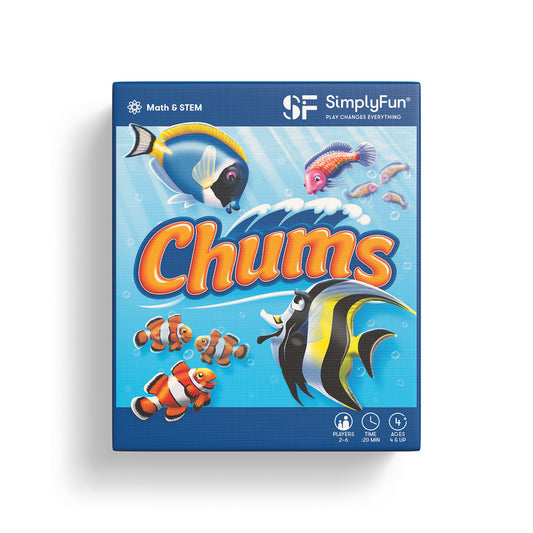-
Math & STEM Counting

-
Math & STEM Early Counting
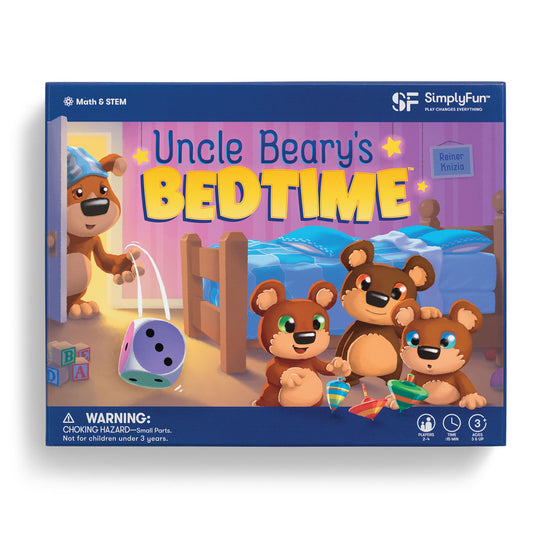
-
-
Math & STEM Numbers & Colors
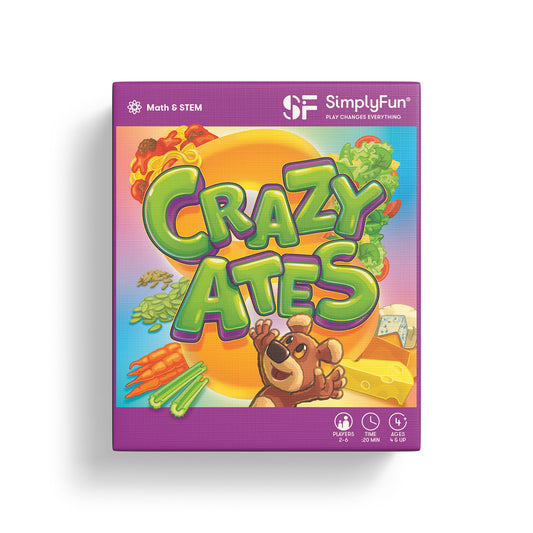
-
Math & STEM Matching
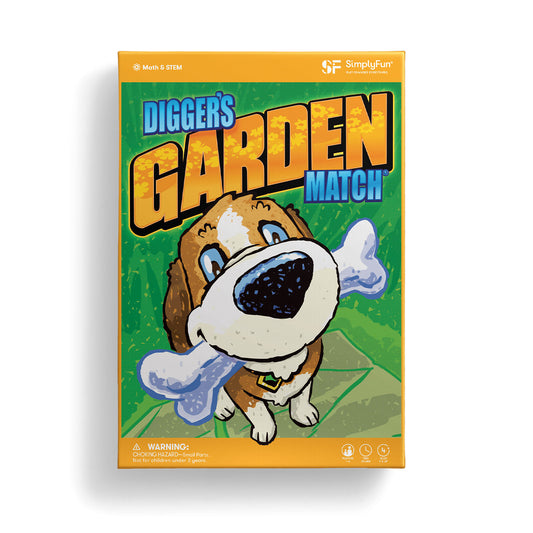
-
Math & STEM Fine Motor
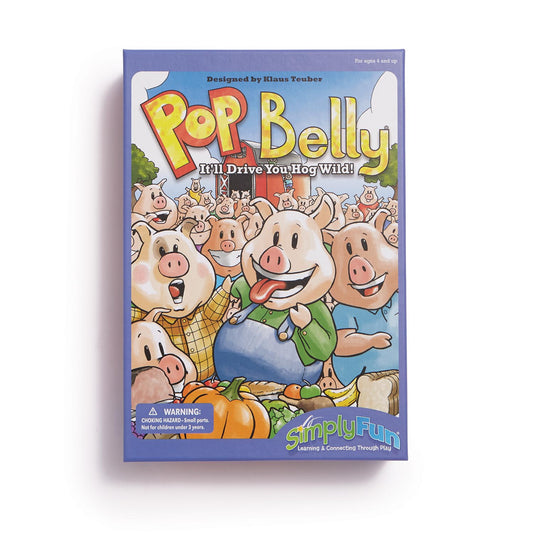
-
Math & STEM Matching
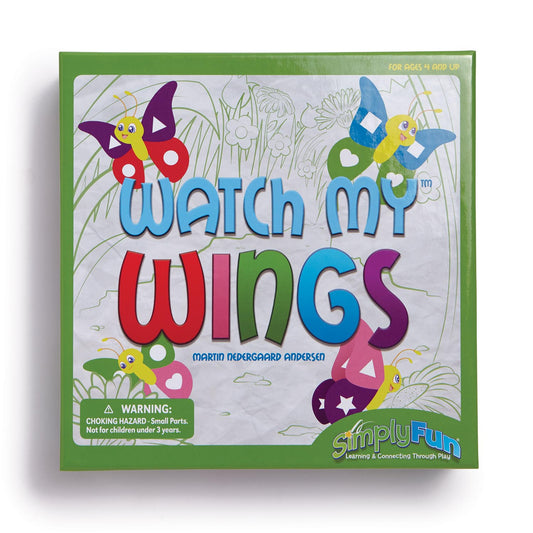
Read more about Math & STEM
The Building Blocks of Math
Math. Does that word bring a smile to your face or make you want to run into a corner and hide? Your experiences in school with math have probably solidified your answer to that question. As a teacher, it is my job to make sure that those early experiences with math are positive and make all my students smile! I accomplish this by making math fun.
From a very early age, children start to learn about math without even knowing it. Putting shapes into a shape sorter, placing pieces into a puzzle, and adding berries on a string are all ways that we can introduce math to toddlers and preschoolers. Children learn math best by touching and physically “doing” math. In my classroom when we learn about shapes, we build shapes and angles out of straws and twist ties. We demonstrate what a polygon is by lying on the ground and making one out of our bodies. We add physical activity to math by doing jumping jacks when we answer our math facts. These activities make math fun. A common misconception about math is that it is all rote memorization of numbers and topics. This is not the case!
Students who understand what math is and how it works have something called a strong “number sense.” Number sense refers to how well a child understands what a number is and what makes up a number. To learn how numbers can be taken apart and put back together, math needs to be a hands-on experience.
- The use of manipulatives in the classroom and at home can help with this. In this classroom, we use cubes, dice, base 10 blocks, and counters so that students can not only feel what numbers look like but can visualize the numbers as well.
- At home, this number sense practice can be achieved by playing games. In a game like SimplyFun’s Share a Berry, young learners practice counting, adding, and subtracting by moving berries on and off their strings. A simple everyday task like washing grapes can also easily turn into a math lesson for your young learners. As you are washing the grapes, count each one out loud and have your child place them on a paper towel. Pretend to hide a few grapes and count how many are left. Your child won’t even realize that they are doing math!
- Lastly, make sure to always have a positive attitude about math. There are so many new ways of doing math these days and your child is probably not learning the same way you did. That is okay! These new ways present the perfect opportunity for your child to be able to teach the topic to you, thus strengthening their understanding of the topic. When playing math games, don’t treat it as a chore, treat it as an opportunity for your family members to have time to learn and grow together, while having fun.
by Sara Lang, 3rd grade teacher, De Pere, Wisconsin.
The Benefits of Playing Math Board Games for Kids
As parents and educators, we always look for ways to make math an enjoyable and engaging experience for kids. Incorporating math and STEM board games into education can create a joyful, interactive environment that helps kids learn and fosters strong family connections. From building social skills to enhancing problem-solving abilities and making learning delightful, these mathematics games (board games included) are an excellent way to help children grasp math concepts more quickly. Let's dive into the advantages here:
1. Building Social Skills: Math board games are great for developing social connections as kids learn to communicate, negotiate, and work as a team. They also teach children to manage competition healthily, learn to win gracefully and handle losses well.
2. Enhancing Problem-solving Abilities: These games challenge children with math problems in a relaxed environment, boosting their critical thinking and decision-making skills. This active engagement helps them consider logic, various strategies, and outcomes.
3. Making Learning Fun: By making math less intimidating and more interactive, math board games for kindergarten and beyond increase engagement and motivation, leading to better math confidence, retention, and a lifelong interest in learning.
12 Math Board Games for Kids of All Ages
Games that teach math have a unique ability to combine entertainment and education, creating an enjoyable learning atmosphere for kids. At SimplyFun, we're all about mixing learning with a lot of fun! Searching for unique math board game ideas or engaging games that involve math? We've covered everything, from critical thinking and problem-solving to reading, math, and social-emotional learning — all using play as an educational tool.
1. 15 to Zero: A Riveting Number Matching Adventure- 15 to Zero is designed to enhance operations and algebraic thinking. This game is perfect for 2nd graders and younger players to practice math operations like basic addition and subtraction in a dynamic, fun setting. (2-6 players)
2. Sumology: A Whirlwind of Equations- In Sumology, players use tiles to create valid equations, tapping into various math functions and exploring strategic options for maximum points. It develops strategic thinking and numerical understanding. (2+ players)
3. Team Digger: Cooperative Problem Solving- Team Digger merges math with essential social skills, making it ideal for 1st and 2nd graders. It focuses on sequential thinking and teamwork as players strategize and communicate to achieve their goals. (2-4 players)
4. Kilter: Balancing Fun with Science- Kilter introduces players to physics concepts through the challenge of balancing blocks on a seesaw, offering a blend of science and fun that enhances spatial reasoning and problem-solving skills. (2-4 players)
5. Cow Cents: Strategic Financial Planning- This game focuses on operations, algebraic thinking, and financial strategy. Cow Cents is a functional math game where players engage in resource management and strategic decision-making to accumulate wealth. (2-4 players)
6. Math Medalist: Double the Fun- Boost your child's multiplication and addition skills with this game that aligns with core math standards for 3rd and 4th graders. Math Medalist offers two types of gameplay in one package for diverse learning experiences. (2-4 players)
7. Math'd Potatoes: Fast-Paced Equation Solving- This fast-paced game requires players to solve equations quickly, promoting rapid thinking and problem-solving in a high-energy environment. Math'd Potatoes is aligned with core math standards for multiple grade levels. (2-4 players)
8. Acorn Paws: Division and Probability- In Acorn Paws, players learn division with remainders and explore probability concepts as they compete to gather acorns. This game sharpens division skills and strategic decision-making in a playful, competitive setting. (2-4 players)
9. Betcha Can't Win: Strategic Dice Game- This game enhances addition skills and strategic thinking as players use dice rolls to claim valuable cards. Board games like Betcha Can't Win encourage planning and foresight, engaging children in fun yet educational gameplay. (2-4 players)
10. Arctic Riders: Self-Check Math Game: This Arctic-themed self-check math game combines math practice with learning fun facts about Arctic animals. Suitable for children aged seven and up, it focuses on creating equations that feed treats to characters in the game. (2-4 players)
11. Math Room: Real-Life Math Challenge- Step into the shoes of an innkeeper, where quick addition and subtraction skills are crucial. Math Room promotes fast thinking and quick responses, ideal for an exciting educational experience. (2-4 players)
12. Owl Solve That!: Math Detective Game- In "Owl Solve That!", players become math detectives, using operations and problem-solving skills to match solution cards and score points. This game fosters critical thinking and enhances math proficiency in a detective-themed adventure. (2-4 players)
At SimplyFun, we believe in making learning enjoyable through play. Our games are crafted for quick sessions of 30 minutes or less, making them easy to fit into a busy schedule. They are also designed to be adaptable, with adjustable difficulty levels and the option for customized rules to keep things exciting.
Dive into educational games that combine math skills with fun. Whether you're seeking math board games for middle school, functional math games for kindergarteners or math and science games to beat boredom and challenge young minds, SimplyFun offers something for everyone!
Cool Math Games that Encourage Less Screen Time

Math gets a bad rap for being a difficult school subject. However, is math really to blame? Or is a lack of PLAY in math learning the real culprit? At SimplyFun, we believe PLAY is the secret sauce for learning traditionally tricky subjects like math. We’ve discovered that children find math fun when it taps into their imagination and play instinct. That’s why creating cool math games is our jam!
“Math is cool,” to the child that feels confident exploring the math problems laid out before them. Yet, the reverse is true when children lack math confidence. So how do we make math cool to learn? With math games that make learning FUN!
Ready to Explore the Coolest Math Games that Encourage Less Screen Time? Game On!
Math games that are cool, even to your coolest tweens and teens
Math and spatial reasoning are essential skills for young adults and helps prepare them for lucrative opportunities in Math & STEM related careers. The following are fun games for math that help advance strategic thinking.

- Matter: Algebraic Thinking, Strategy, Predicting
- Shape Whiz: Geometry, Measurement
- Pelican Cove: Algebra, Spatial Reasoning, Quick Thinking
- Star Gazer: Operations, Algebraic Thinking, Patterning
- High Tail It!: Strategy, Predicting, Planning
The Go-To Math Games for Middle and Upper Elementary Kids
These games underscore foundational math skills while introducing more complex mathematical thinking that taps into creativity and imagination.

- Math’D Potatoes: Addition, Subtraction, Quick Thinking
- Front Runner: Algebra, Factors
- Walk the Dogs: Counting, Multiplication, Predicting
- Kilter: Physics, Fine Motor Skills, Planning
- Sumology: Addition, Multiplication, Subtraction, Division
- Mirror Mansion: Geometry, Memory
Fun Math Games for Early Learners
These games take the early learner on an adventure as they pick up foundational math and critical thinking skills along the way!
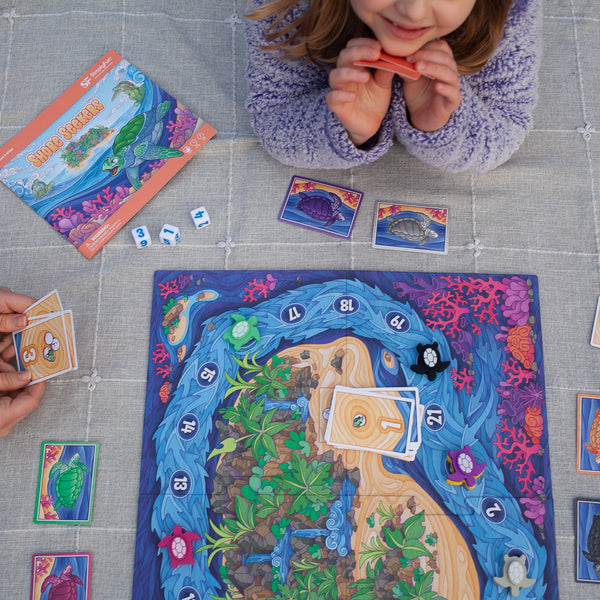
- Math Room: Addition, Subtraction, Quick Thinking
- Acorn Paws: Division with Remainders, Probability
- Shore Seekers: Addition, Early Multiplication
- Save the Pie: Early Physics, Teamwork & Collaboration
- Glow Spotters: Addition, Spatial Reasoning
- Whirly’s World: Numbers, Addition, Counting
Math Games Encourage Math Exploration
Cool math games allow children a playful way to learn complex math subjects. How do you know if you’ve got a cool math game on your hands? Easy! A cool math game is the one your children actually want to play! Building a passion for mathematics requires a fun approach that goes beyond rigorous memorization and repetition.
Math games are fun when games like Mirror Mansion, Walk the Dogs, and Math Medalist are added to the mix! How about math games with monsters? Oh yeah, we’ve got that too!
SimplyFun Math games are fun because they allow children to bypass their reservations about math and explore math with creative problem-solving and curiosity. World-renowned STEM researchers and mathematicians take on math problems in much of the same way!
“To me, mathematics, computer science, and the arts are insanely related. They’re all creative expressions.”—Sebastian Thrun, German innovator & computer scientist
So let’s ditch the math stigma, pick up a few fun games for math, and play our way to math confidence!
Does Your Child Need Extra Help with Math?
“I hate math!” “I don’t get it!” Parents hear these words all the time when they help with math homework. Here are a few things to consider when deciding if your child in elementary school needs additional math support.
1. Can your child relate numbers to real amounts? Can your child look at an amount of jellybeans or blocks and make an approximate guess? For a group of 15 jellybeans, the child should guess 10 or slightly above, but not 30 or more. This demonstrates that your child knows what a number means in terms of amount.
2. Can your child transform abstract concepts into concrete realities? What would your child say if you asked, “which is bigger ¼ or 1/3?” Your child should not respond that ¼ is more just because 4 is greater than 3. Your child should be able to draw a picture of a pie and show you why 1/3 is more than ¼.
3. Does your child have difficulty understanding math symbols? Symbols such as ÷, =, <, >, ≠, and ≤ are abstractions of words that give instructions. Many children do not understand the symbols or confuse them. It’s a good idea to have your child read equations aloud to make sure there is no confusion.
4. Does your child have difficulty with math facts? Many multiplication facts can be memorized, but children need to know the various ways numbers can be composed and decomposed. You can compose numbers in different ways. For example, 4+8 = 12 and 4X3 = 12. You can decompose as well. For example, the number 10 can be decomposed in two ways: 10 = 1 + 9 or 10= 3+ 7.
5. Does your child have difficulty understanding story problems? Reading comprehension issues can make story problems challenging. In addition, children need to know how to group, merge, and order data to solve the problem. Children with impulsivity, lack of interest, low frustration tolerance, or inability to take different perspectives might struggle with these processes.
Use the questions above to determine which issues are having an impact on your child’s ability to learn math. Ask your child to talk about a math problem and describe their thinking to see where the difficulty lies. Consider discussing your findings with your child’s teacher to see if they have any advice or additional resources for you.
Practice at home using situations that require math, like dividing a pie, playing relevant games involving math, and letting your child make up problems for the rest of the family to solve. Make math practical and fun!
By Dr Toni Linder
Dr. Toni Linder is a leader in the field of early childhood development and early childhood special education. She’s also a member of our Play Advisory Council.
Debunking the Girls and Math Myth
Have you heard the myth that girls are not good at math? Well, there’s a reason why it’s called a “myth.” It’s because it’s just not true. There can be no blanket statement that girls aren’t good at math, because math skills are influenced by genetics, culture, experience, upbringing, and attitudes. There is not much we can do about genetics, but the other four elements are adaptable.
- Culture
In many cultures around the world, such as India for example, girls are as skilled as boys in math and enter math-related jobs at a higher rate than the U.S. Research is also revealing that in the U.S. in programs where the math curriculum is motivating and relevant, there is no gender gap on math test scores. The current cultural push for students to do well in STEM courses is also resulting in more girls enrolling in higher level math classes in the upper grades. - Experience
Experience is an important factor for math success, both at school and at home. A math curriculum that emphasizes memorization of math facts and uses speed tests makes math feel shallow and boring. Girls tend to like subjects that are more connected to real life and have depth of meaning. Schools need to examine their math curriculum to make learning math more relevant and stimulating. - Upbringing
Parents may not have much influence over the math curriculum or teaching strategies, but they can have an impact on their daughter’s math experiences at home and in the community. Integrating math into everyday activities shows children the relevance of math and shows them that math is not just something you do in school. Activities such as how to divide slices of pizza, how to save money to buy a car, or even finding out how the electoral college works makes math relevant. - Attitude
The final influence on girls and math is attitude. Attitudes of teachers and parents can greatly impact how girls feel about math. Teachers who say, “Math is just not your thing; you’re good at reading” are unknowingly killing the desire to learn and turning girls away from math. In the same way, parents who say, “I was never good at math either;” or “Ask your dad for help, he’s better at math” are sending a not-so-subtle message that girls are not expected to do well at math.
So, what can parents do? Even if the math your daughter brings home is above what you remember how to do, say, “Let’s figure it out together.” Include your daughter in discussions about money, whether it is about the budget, savings, retirement, or college. She needs to understand the practical aspects of knowing how to use math to solve problems in life.
Parents can also make learning math fun. Games are a great way to learn and use math skills. The most obvious games of numbers include cards and dice, but almost all board games include math elements such as counting, adding scores, and spatial reasoning. Some board games with numbers even have a particular focus on specific math skills.
Many SimplyFun games incorporate various math skills across the grades. For example, games for younger children, such as Digger’s Garden Match involve adding and subtracting and Cow Cents requires children to make change with money. For older children, games involve a broader range of math skills. Use SimplyFun’s shop page to help you find the math game that meets your specific needs.
Playing such games with your children allows parents to see how their children are approaching various aspects of math and support them in a non-threatening, non-school-related, enjoyable way. Parents can model how to look at a situation, help their child figure out the best solution, and reinforce the child’s abilities with the math skills involved in the game. Who knew? Math can be fun!
by Dr Toni Linder
Dr. Toni Linder is a leader in the field of early childhood development and early childhood special education. She’s also a member of our Play Advisory Council.
STEAM: Not All Hot Air

Programs implement STEAM with the intention of sparking imagination and creativity, creating an integrated and engaging learning environment for kids. Subjects are blended and learning takes place through hands-on, creative projects. Children are encouraged to ask questions and attack real-world problems using imagination and higher-level thinking skills. This isn’t typical textbook instruction, so there are no “right” answers because children identify problems, experiment with solutions, and use artistic design and engineering, technology skills, math, and scientific reasoning to create innovative solutions to problems that intrigue them. For example, when studying the environment, children may engage in creating inventions to solve existing problems, such as water purification systems, robots for recycling, structures for safety in hurricanes, and so on. Art projects can also serve as a basis for studying science, incorporating technology, and using math. For example, art projects about ocean life could involve scientific research on the internet as well as book research on ocean life; math related to depth, width, percentages, proportion, and so on is needed to determine relative sizes; and engineering is studied as three-dimensional natural history installations are created.
Initial results show that STEAM education programs may lead to increased commitment to both the sciences and the arts as children become more confident and motivated to learn more about their areas of interest. Everyone is more inspired to learn when fully engaged, especially when you can have fun at the same time.
by Dr Toni Linder
Dr. Toni Linder is a leader in the field of early childhood development and early childhood special education. She’s also a member of our Play Advisory Council.
Girls and STEM

We need girls and women in all fields, not just in fields related to the humanities, such as reading, literature, creative writing, art, drama, music, and dance. What happens to girls who are originally intrigued by science and math areas to cause them to turn away from these interests? Why is it that girls lose interest in topics related to STEM (Science, Technology, Engineering and Math)? Studies show that in the early years, girls are attracted to and motivated to pursue topics related to STEM. But other studies show that girls as young as six start to turn away from science and math activities. And even girls who maintain skill and curiosity in these areas start to lose interest in subjects related to STEM at around the age of 14 or 15 and usually never regain it.
There are many theories about why this happens. One theory indicates that conformity to social expectations, gender stereotypes, gender roles, and lack of role models continue to direct girls’ career choices away from STEM fields. This is surely true. Parent influence contributes as well. I clearly remember my mother stating, “I was never good at math. Go ask your dad.” I was also told when I got a lower grade in science, “That’s okay, you’re good at reading and writing.” Such messages subtly convey that it’s okay to not be good at these topics if you’re a girl.
Awareness of the need for changes to encourage and support girls in the STEM fields is growing. Pink blocks and tool kits and girl-themed science kits have made their entrance into the toy market. Workshops, clubs, camps, and science events provide a means for girls to learn the practical application of STEM knowledge.
So, what can parents do to stop limiting the choices of girls’ directions of inquiry, creativity, and study? How can we encourage exploration of less stereotypical topics?
- Pay attention to your own words. What do you say that denigrates your own skills in math and science? Be aware that this influences your child.
- Introduce toys and materials related to science, technology, engineering, and math in addition to other, more traditional interests.
- Provide opportunities for your daughters to meet, talk to and observe women in various fields. Choose movies and other media that portray powerful, smart women in leadership roles. Role models are important to show possible options.
- Seek out extracurricular activities that are both fun and illustrate the relevance of learning STEM skills to everyday life. Activities such as robotics workshops, clubs such as Girls Who Code, science fairs, space camps, and so on are great ways to engage children in creative endeavors and motivate an interest in STEM.
- Encourage pursuit of multiple passions. There is no reason a girl can’t be on a dance team and also be in the science fair. Combining the right-brained thinking required for the arts with the reasoning and detailed investigation required for STEM results in more creative and imaginative processes and productions.
Movies such as Hidden Figures provide insight into how women have contributed greatly (and silently) to scientific progress. We need to introduce our girls to all of these women who came before and invite them to become a not-so-silent leader in their own right.
By Dr Toni Linder
Having Fun with Math Every Single Day

It’s amazing how many times a day we all do math but may not even realize it. Instead of just solving problems out of a book, get your kids in on the action.
After all, math is fun, especially when kids don’t even realize how much they’re learning. Help them learn more and get more excited about math by incorporating into their daily lives and activities.
- Take Them Shopping
Shopping trips are ideal for a variety of educational opportunities. You get to teach your kids a wide variety of lessons and they stay happy and engaged. It’s a win-win. Just a few things to help them with math include:- Calculating deals on different products
- Calculating the costs after coupons
- Counting items
- Identifying the shapes of products
- Matching items to recipes
Of course, math isn’t the only subject kids can have fun with during shopping trips.
- Get Cooking
It’s a good idea to get kids to help you in the kitchen since they’re more likely to try new things if they help prepare them. However, recipes are full of fun math lessons. Let your kids help measure ingredients, count supplies, and even half or double recipes depending on servings.
- Play Board Games
Your kids love playing board games but probably don’t realize they’re full of math. From counting moves to dealing out cards, math’s everywhere in games. Encourage them to play more and even go a few rounds with them.
- Play Car Games
Short and long car trips are great educational opportunities. Play games where each person has to count cars of different colors or spot signs of different shapes. They can also help calculate how many more miles are left and what type of gas mileage you’re getting.
- Calculating Tips
If you’re going out to eat, let your child help calculate the tip. They can even help add up the total before it comes. It might sound simple, but kids love helping out and it teaches them the basics of tipping at a young age.
- Telling Time
You might not think of your clock as a way to teach math but think of how many times your child asks how much longer it is until dinner, bedtime and playtime. You’ll be able to teach them to count minutes and hours while reducing how often you get asked the same questions.
Start having more fun with math and incorporate learning opportunities throughout the day for your kids.
5 Ways to Introduce STEM and STEAM to Your Little Ones

Young children are natural scientists. They love to explore, investigate, experiment, and make discoveries both on their own and with others. From early infancy on, they make comparisons, make predictions, try things out, and show adults what they’ve learned. As they reach preschool age, they explore sizes, shapes, patterns, and quantities with blocks, art, and games and with objects from nature, such as sticks, stones, leaves, water, and sand. This early investigation lays the foundation for knowledge and skills within science, technology, engineering and math, otherwise known as STEM.
Parents can facilitate building a strong foundation in STEM or STEAM(which includes the arts). by consciously introducing experiences to their young child that provide opportunities to ask questions, experiment, and make their own discoveries about how the world is organized, how things go together, how various devices work, and what they want to know. Here are a few examples:
- Science
Plant seeds in a garden, watch them grow, experiment with how to water them, compare different stems, leaves, and flowers. These activities give children and parents an opportunity to make scientific discoveries about the cycle of plant life, patterns of growth, classifications, and various aspects of the environment.
- Technology
Introduce young children to videos about growing vegetables or look at different flowers and vegetables online.
- Engineering
Create an indoor window garden with glass jars and different materials (dirt and carrot tops), an avocado seed, or a potato (supported by toothpicks poked in the seed or potato and balanced across the top of the jar filled with water).
- Art
Draw pictures of what is happening to the roots or tops as the plant grows. Place the pictures in a row to see the sequence of change.
- Math
Play a game such as Share a Berry, where children count, add and subtract their berries, sequence and recognize patterns, and also learn to share.
Research has demonstrated that children who have strong foundations in STEM in preschool do better in these same areas in the upper grades. They develop a scientific approach to investigation. By stimulating interest, engagement, and problem-solving in the early years, children learn how to learn and are not intimidated by STEM.
by Dr Toni Linder
Dr. Toni Linder is a leader in the field of early childhood development and early childhood special education. She’s also a member of our Play Advisory Council.
Practical Ways to Increase Your Child’s Interest in Math

Are you a parent who wants to increase your child’s motivation and interest in math? If so, avoid math workbooks and flashcards. While some children may find these challenging and interesting, most children find worksheets and flash cards boring and self-defeating.
As they encounter problems on these tasks that they cannot easily solve, they lose self-confidence and, eventually, the motivation to learn the math skills they need. Instead of providing these formal math devices, you are more likely to spark interest and enthusiasm with real-life problems that require the child to solve a problem that is of importance to them.
The key is to think about the opportunities to build math skills during normal, daily activities. Working out problems with your child allows them to see that math is something you appreciate, enjoy using and need. Depending on the developmental level of your child, the appropriate skills will vary.
Let’s explore just a few.
Breakfast:
- Estimate the number of pieces of cereal in the bowl
- Measure the milk for the cereal in measuring cups
- Count the number of bites it takes to finish the bowl of cereal
Lunch:
- Figure out fractions of a pizza per person
- Divide price of pizza by number of people eating it for cost per person
- Count out potato chips so each person has the same amount
Dinner:
- Help cook dinner and use measurement tools and addition
- Follow recipe and modify based on number of people (multiply or divide)
- Count items as the table is set (one-to-one correspondence)
Riding in the car:
- Estimate the number of miles to the destination (check upon arrival)
- On return from destination, intermittently determine how many more miles to go to get home (subtract)
- Count the number of red cars you pass
- Look for things in various shapes (geometry)
- Figure out how much gas you can get for $25
Grocery Shopping:
- Estimate total costs as things are added to the cart
- Weigh items and determine weight
- Multiply weight times cost per pound
- Give the child $20 toward the purchase of groceries and let him add items to the cart until he gets to $20
- Determine price per volume for best buy
- Add up coupon values
Eating out:
- Estimate the total cost of the bill of everything ordered
- If the bill for what is wanted is too high, subtract some of the food from the bill
- See how many shapes you can find on the table and around the restaurant
- Figure out what the tip would be for varying bills and tip percentages
Playing games:
- There are endless games online requiring math, but don’t forget nondigital games with social interaction
- Play card and dice games. Depending on the game, they require matching, adding, counting, determining probability, and so on
- Young children enjoy math games that require counting, matching, adding, and so on
- Spend time building structures, or kits, and jigsaw puzzles, all of which require math skills
Watching television:
- Watch National Geographic and similar shows that often highlight interesting science and math facts (length of the Great Wall, how much food animals eat, geometry and construction of pyramids, etc.)
- Determine how much time is left until a favorite show is on
- Add up the total amount of time is spent watching TV, using computer, on phone
The more frequently a parent uses math with their child, the more comfortable the child will become with the math curriculum they encounter in school. Monitor the math skills in homework and then incorporate some of those skills into real life situations to provide practical examples.
Conversely, take the homework problems and translate them into a real-life problems. For example, take the problem 30 – 17 = X. That can be illustrated by taking the child’s favorite TV show, “Let’s say you are watching Sponge Bob, which is 30 minutes long. After 17 minutes, Dad calls you to come help him with something. How much of the show will you miss?”
Challenge your kids to come up with math questions for you. By helping children see that math is needed everywhere in their day, math becomes more relevant, and thus more interesting.
by Dr Toni Linder
Dr. Toni Linder is a leader in the field of early childhood development and early childhood special education. She’s also a member of our Play Advisory Council.
Build Confidence with ‘Sneaky Math’ Games
What is Sneaky Math?
Math is an essential skill in life, yet many kids struggle with the formal math lessons taught in school and practiced at home. They can be stressful, overwhelming, and often boring. To overcome this while still strengthening your child’s foundational math skills, try what we call ‘sneaky math’ by sneaking in some math through gameplay.
Sneaky Math games
Sneaky math games practice fundamental math concepts in a fun, engaging way. They may not even need numbers to do it! We know that kids learn best through play, so when kids have fun practicing their skills, knowledge is more likely to stick and give them greater confidence at the same time.
Here are a few sneaky math games from SimplyFun that will be sure to entertain while strengthening core math skills.

Acorn Paws
Focusing on early elementary math, Acorn Paws teaches division and remainder concepts. This game uses visuals and manipulatives rather than numerical cues. Players earn their share of acorns as the park squirrels gather all the loose acorns from around town and divide them up. Acorn Paws is for 2-4 players ages 7 and older and takes 15 minutes to play.
Grill Party
Learn ‘more than’ and ‘less than’ concepts by placing and swapping food pieces on the grill to match situations on your food cards. Be the first to match all your cards to win. We can’t promise you won’t get hungry in the process! Grill Party is for 2-5 players ages 8 and older and takes 20-30 minutes to play.

Pelican Cove
Think fast to get your pelicans nested before time runs out in this fast-paced game. Each pelican has their own preferences on the other pelicans they want to nest by. Apply algebraic principles and spatial reasoning to try and make them all happy! Pelican Cove is for 1-5 players ages 8 and older and takes 30 minutes to play.

Back-to-School Success Starts with Game Play

If you’re like us, you’ve been thinking about how to best prepare kids for back-to-school success. There are many things you can do to support and supplement the fantastic learning kids get from school, right at home! Game play! Game play to advance learning is something we’re not only passionate about, it’s our entire world.
Between SimplyFun’s four core academic categories, there’s a game (or five!) that will send kids confidently back to the classroom. Today, we’re bringing attention and awareness to SimplyFun’s Math & STEM game category.
Math & STEM
SimplyFun’s Math & STEM games span a variety of skills and abilities from preschool age and up. From counting, operations, and probability to engineering, physics, and astronomy, there’s a SimplyFun game to suit any child. Read on to learn about a few of our top Math & STEM games that will best prep kids for success.

Glow Spotters
Light up their love for math from an early age with Glow Spotters! Practice numbers, addition, and spatial reasoning while collecting various-shaped Glow Tiles.
The Glow Spotters Troop is on a nature adventure, trying to count fireflies to earn their Firefly badges. Each player has a set of firefly boards numbered 1 to 10. First, roll the die and collect Glow Tiles. Then, fit and arrange the shapes to fill the grid on the boards to reach the sum of fireflies shown. The first player to complete all their boards wins the game and receives their Firefly badge! Glow Spotters is perfect for 1-4 players ages 5 and up and takes 20 minutes to play.

Grill Party
Grill Party is fun for the whole family and helps teach ‘more than’ and ‘less than’ concepts. Kids will have so much fun playing, they won’t even realize how much they’re learning!
Practice algebra and planning concepts by placing and swapping food pieces on the grill to match situations on your food cards. Be the first to match all your cards to win. We can’t promise you won’t get hungry in the process! Grill Party is for 2-5 players ages 8 and up and takes 20-30 minutes to play.

Planet Voyagers
Blast off into fun and learning while touring space and conducting planetary research! Planet Voyagers focuses on astronomy and strategy, and even includes a ‘fun facts’ solar system poster for continued learning. Ready? Let’s launch!
In Planet Voyagers, players journey from planet to planet, sending out research probes to earn points. While they travel, they learn interesting facts about the celestial bodies near and far. Players read their voyager cards and data boards, learning important facts about planets, moons, asteroids, and comets. Simultaneously, players analyze their voyager cards, as well as the movements and cards of other players, adapting strategies and making decisions that help them score points. The first player to land their rocket on the planet Neptune or to score 12 points wins the game! Planet Voyagers is intended for 2-5 players ages 8 and up and takes 30 minutes to play.
Oh and by the way, Planet Voyagers recently won a 2021 Academics’ Choice ‘Brain Toy’ Award!
by SimplyFun



